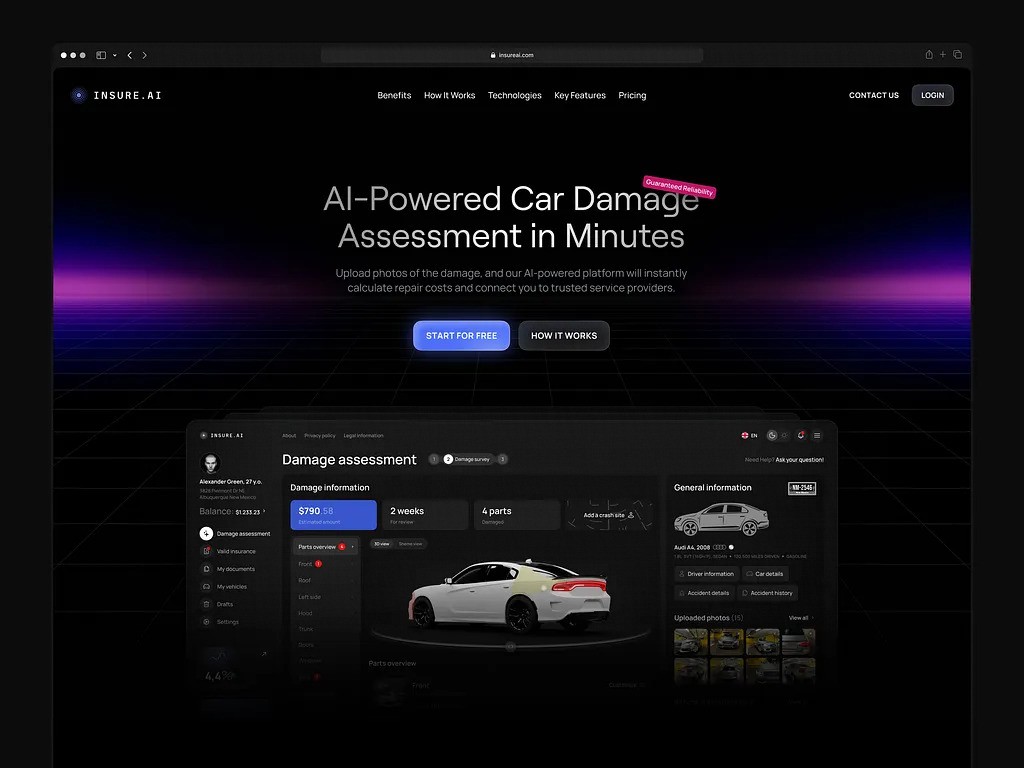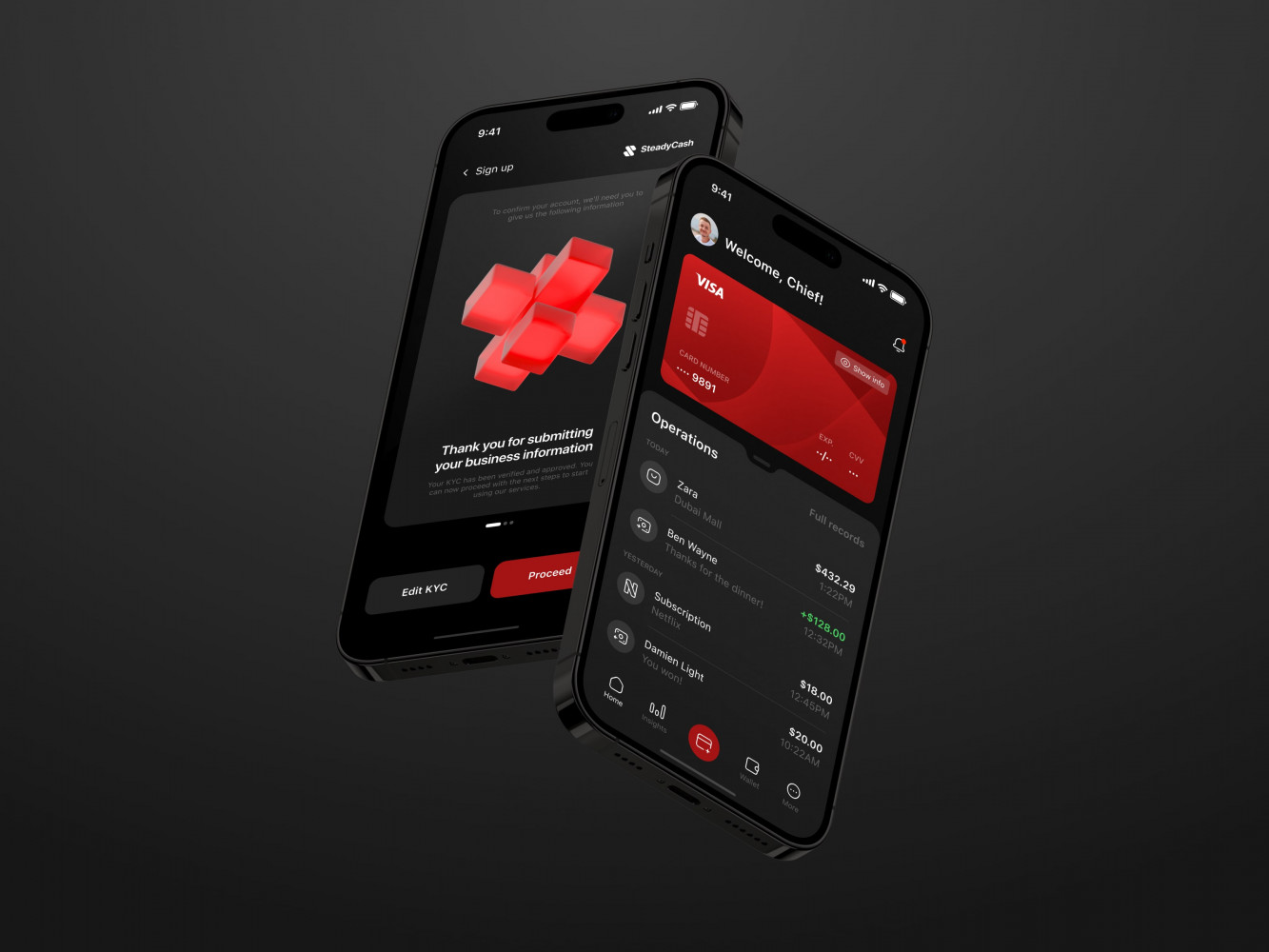For those who prefer to listen rather than read, this article is also available as a podcast on Spotify.
Contents:
You’re either neck-deep in building your startup or juggling the million things on your product roadmap. Maybe both. And somewhere along the way, you hit that frustrating wall where there just aren’t enough hours, hands, or brainpower to get everything done.
The idea is brilliant, a vision for something groundbreaking, but resources? Truth be told, they’re not exactly endless. Hiring an in-house team feels like a leap of faith when cash flow is tighter than you’d like to admit. And yet, trying to do everything yourself is a recipe for burnout faster than you can say “hello.”
The spell to break this curse is called IT project outsourcing. It is access to specialized talent without breaking the bank, flexibility to scale as your needs change, and the ability to focus on what you do best—leading your company.
But there is a “but.” You need a strategy. A lot of it. Picking the right partner, setting clear expectations, signing a contract—I’ll dive deep into these essentials to give you a roadmap. It will make outsourcing work for you instead of against you.
Introduction to IT Project Outsourcing
What is IT Project Outsourcing?
Simply put, it is a situation where you are outsourcing partially or completely your project to an external team instead of doing it in-house. The project could be anything: building a mobile application, having your cloud infrastructure hosted, testing software, or keeping your IT maintained. The crux of it is that you are utilizing someone else’s expertise and resources to get the work done efficiently.
For example, suppose you’re building a SaaS platform but don’t yet have an internal development team. Instead of desperately hiring local developers, something that can take months, you hire a company outside your country of residence which specializes in software development. They do the coding while you focus on other aspects of your business, like customer acquisition or product strategy.
Key Concepts to Wrap Your Head Around
There are a few key things you’d like to recall when you’re dealing with IT project management outsourcing:
- Scope of Work (SOW): This stipulates exactly what work is to be outsourced. Will the vendor be building the entire product, or just some features? The clarity here matters.
- Engagement models: There are different ways to structure the partnership. For instance, a fixed-price model is great for well-defined projects with predictable outcomes. There are other models like time & material and dedicated. I’ll dwell on the models and differences between them a bit later.
- Nearshoring vs. offshoring vs. onshoring: These are words that describe where the outsourcing occurs. For example, nearshoring is working with groups in neighboring countries (if you’re in America, you may hire Mexican developers).
How Did We Get Here? The Evolution of Outsourcing in Tech
Outsourcing isn’t really new—it’s been around since businesshouses discovered they didn’t need to do everything themselves. But what tech firms are doing with it has shifted a great deal since the early days.
Back then, in the ’80s and ’90s, IT project outsourcing services used to be primarily all about reducing costs. Large corporations would outsource boring, routine work like data entry or customer support overseas in order to cut costs. It wasn’t glamorous, but it was effective. Then the Y2K—infamous millennium bug hoax hit, and companies needed legions of programmers to mend their legacy systems before the year clock hit 2000.
Cut to the early 2000s, and the era of globalization + internet connectivity introduced a new era of possibilities. India emerged as the headquarters for tech talent, delivering high-quality engineering capabilities at low cost. Startups finally knew they could utilize global experts without hemorrhaging bank accounts. The approach soon became about tapping skills not on offer locally.
Nowadays, though, the game is played differently. With more use of communications software, Agile practices, and cloud computing, collaborating with distant teams is almost as natural as it gets. Throw in the accessibility of freelancing platforms like Upwork, and hiring solo freelancers for small projects is just a mouse click away. Big agencies, on the other hand, offer end-to-end services, from design all the way to deployment. Like Shakuro, yes.
And then there is the pandemic. It caused numerous corporations to reevaluate the traditional office setup and embrace remote work in its entirety.
Why Companies Outsource IT Projects
Cost Efficiency
It is expensive to employ a full-time staff. Salaries, benefits, rent, hardware, and training can all get expensive very fast. And if you’re a bootstrapped business, adding full-time staff may seem like burning money you don’t have.
Project-based IT outsourcing reverses the numbers by giving you access to elite professionals for a fraction of the cost. Think about it: it could take you $150,000+ annually to rent a senior developer in Silicon Valley. But an Eastern European or Latin American team? You can pay a tenth of the price for access to the same class of talent. It’s not cheating—it’s being smart about your budget.
Incidentally, this is not only for smaller players. Even big technology giants outsource some functions to maximize their expenditure. If they can, why not you?
Access to Specialized Expertise
No matter how good your current team is, there is always a void in skills. Maybe you need someone to deal with AI algorithms, blockchain implementation, or security protocols. Maybe you’re trying to create a mobile app but lack designers conversant in UI/UX jargon.
Instead of running about for months trying to locate specialists, IT project outsourcing puts you in touch with a worldwide talent pool. Need a machine learning specialist? Done. Need a QA tester who breaks his fast on bugs? They’re there. The solution gives instant access to abilities you would otherwise lack, without the headache of long-term arrangements.
Faster Time-to-Market
The super-competitive marketplace demands haste. Lots of it. If you wait to deploy your MVP or roll out a new feature, you risk losing market share or becoming obsolete.
Instead of starting from scratch with recruitment and induction, you can hit the ground running with a team you already have who know their way around. It’s especially useful if you have tight schedules or you’re responding to customer demand, which shifts like day and night.
Would you prefer to have six months of hiring and training an army, or jump head-first into building out with a partner who is in the go-ready state? That’s correct.
Scalability Without the Headaches
Maybe the hardest part of business growth is figuring out how to expand effectively. Do you hire additional personnel when demand spikes? What if demand decreases again? Managing labor swings in-house is like walking on a tightrope without a net.
IT project management outsourcing solves this problem with flexibility. Need some extra hands when crunch time rolls around? No issue. When the workload slows down, you can dial it back without worrying about layoffs or idle personnel. This kind of flexibility is a game-changer for product teams and startups attempting to navigate unpredictable growth patterns.

Medical Practice Management Software Dashboard Design by Shakuro
Types of IT Projects to Outsource
Software Development & Custom Solutions
Probably the most widely recognized type of IT project people think of when they hear “outsourcing.” And for good reason—it’s where off-site teams shine. No matter what you’re developing, the methodology spares you headaches, dollars, and hours.
Why avail IT project outsourcing services for software development?
- Speed: External teams are usually already formed and on speed. You eliminate the recruitment process altogether.
- Specialization: Do you require AI integration? Blockchain? AR/VR? The agencies usually have specialized teams with great familiarity with the latest trends.
- Flexibility: You can reduce the team or increase it based on your current needs. It’s the perfect solution for startups whose needs fluctuate.
Examples:
- MVP development: Already started and want to validate an idea with an MVP? Outsourcing is ideal. You don’t need a large team in-house for this stage; you need velocity and agility.
- Adding features: Already launched, but you need to add new features? An outsourced team can develop specific modules without interfering with your existing business process.
- Legacy system modernization: If you’ve inherited outdated codebases from previous iterations of your product, outsourcing experts can refactor and modernize them for better performance.
Infrastructure & Cloud Management
Almost every tech company relies on cloud services like AWS, Microsoft Azure, or Google Cloud Platform to power their operations. But managing these systems isn’t exactly a walk in the park. That’s where outsourcing comes in handy.
Why do you need IT project management?
- Complexity: Provisioning servers, databases, storage appliances, and network settings requires specialized skill. Not every organization has a DevOps wizard on staff.
- Cost optimization: Paying for the cloud can get very expensive if not managed efficiently. Outsourcing ensures that you pay only for what you consume.
- 24/7 monitoring: Downtime can kill a business reputation. A quality agency can shoulder the monitoring burden and watch your infrastructure 24/7 to prevent catastrophes before they happen.
Examples:
- Cloud migration: Migrating your data and apps to the cloud sounds simple until you realize how many pieces are involved. Outsourcing agencies have honed the art of seamless migrations, minimizing disruptions.
- DevOps automation: Installing automated pipelines, dynamically scaling resources, and maintaining CI/CD practices can dramatically boost efficiency.
- Disaster recovery planning: Ever have nightmares about losing all your customer information? Most partners plan comprehensive backup and recovery to keep your business safe.
Cybersecurity & Compliance
If there’s any area where no one ever wants to cut corners, it’s security. Data breaches, ransomware attacks, and compliance violations can destroy even the best startup. But building an internal cybersecurity team is expensive and time-consuming.
Cybersecurity & compliance and IT project outsourcing, do they go hand in hand? Yeah:
- Specialization: Cybersecurity threats are always present. Security requires constant education and evolving. A good agency will do all that continuously.
- Regulatory complexity: Depending on your business, you have to comply with regulations like GDPR, HIPAA, PCI DSS, SOC 2, and others. Without a guide, you can easily become lost trying to figure out all of this. Or overlook something important.
- Proactive defense: Instead of waiting for an attack to occur, outsourced security teams actively look for vulnerabilities and patch them up before hackers get a chance to exploit them.
Examples:
- Penetration testing: Ethical hackers simulate attacks in order to identify weaknesses in your security. It’s like getting a thief to break into your home security system—but legally. Just watch out when choosing the contractors, though.
- Incident response: When things go wrong, having a rapid-response team ready on call is what counts.
- Compliance audits: Your product needs to meet regulatory needs. It is time-consuming. However, compliance audits enable you to focus on innovation while paperwork is handled by the experts.

Dashboard for a Analytics Tool by Shakuro
Popular Outsourcing Models
Typically, there are three models of IT project management outsourcing: offshore, nearshore, and onshore. Each one has its pros and cons, and which one to use depends on your individual needs, budget, and personal preferences.
Offshore vs. Nearshore vs. Onshore
Offshore Outsourcing
You partner with teams located in faraway countries or even on different continents. For example, if you’re based in the U.S., hiring a team in India, Ukraine, or the Philippines would fall under this category.
Pros:
- Cost savings: This is the biggie. The model is typically the cheapest option because labor costs in these regions are significantly lower than in Western countries.
- Access to large talent pools: India, China, and Eastern Europe boast well-developed tech centers with millions of skilled developers, designers, and engineers.
- 24/7 workflow capability: A weakness but a favorable one at times. If you play your cards right, while you sleep, your offshore team can keep working, effectively providing you with a “follow-the-sun” workflow.
Cons:
- Communication problems: As I said, significant time zone differences may make real-time communication difficult. Your morning calls might be their evenings.
- Cultural differences: Cultural and work differences and language may lead to misunderstandings or mismatches occasionally.
- Quality variability: Agencies differ widely in the type of quality they deliver. Research is highly essential.
Nearshore Outsourcing
This IT project outsourcing model is achieved through the collaboration of teams from nearby or proximate nations. If you are in the U.S., you can outsource to Mexican, Canadian, or Costa Rican teams. For European companies, it might be having teams in Eastern Europe or North Africa.
Pros:
- Proximity matters: Shorter time zone differences mean easier communication and more overlap in work hours. No longer do you have to have conference calls at midnight!
- Cultural alignment: Nearby countries usually have similar business etiquette, languages, and cultural norms. Chances of you being misinterpreted are much lower.
- Travel feasibility: Require a face-to-face meeting? A trip to a nearshore location is normally faster, cheaper, and less exhausting than reaching halfway around the world.
Cons:
- Moderate costs: While still being cheaper than onshore options, the nearshore model tends to cost more than offshore. You’re paying a bit extra for convenience. Whether that’s worth it or not depends on your project.
- Limited talent pool: Each region has a different number of talents as what you’d find in major offshore hubs.
Onshore Outsourcing
Compared to the other two models, this one remains all within your own country. For instance, a San Francisco startup might outsource to a development agency in Austin, Texas, instead of overseas.
Pros:
- Seamless communication: Same language, same time zone, same cultural context. When you opt for IT project outsourcing services onshore, collaboration feels natural and friction-free.
- Legal simplicity: No fuss coping with overseas laws, tax regulations, or intellectual property issues. It is still domestic.
- Improved quality assurance: Local suppliers tend to follow higher-quality standards and certifications, giving you reassurance.
Cons:
- More costly: It is generally the most expensive option. Labour prices reflect local market realities, which can strain tight budgets.
- Limited scalability: Depending on where you are geographically, getting large numbers of available talent within your vicinity can be difficult, particularly in rural areas or small cities.
| Factor | Offshore | Nearshore | Onshore |
| Cost | Lowest cost; significant savings on labor. | Moderate cost; cheaper than onshore but more expensive than offshore. | Highest cost; reflects local market rates. |
| Communication | Potential language barriers; limited real-time overlap due to large time zone gaps. | Easier communication; minimal language barriers and overlapping work hours. | Seamless communication; same language and time zone. |
| Time Zone Differences | Significant (10+ hours); can create delays but enables 24/7 workflow. | Minimal (1-6 hours); easier scheduling and collaboration. | None; fully aligned work hours. |
| Cultural Alignment | Moderate to low; cultural differences may lead to misunderstandings. | High; similar cultural norms and business practices. | Very high; shared culture and values. |
| Legal & IP Concerns | Higher risk; navigating foreign laws and regulations can be complex. | Moderate risk; closer proximity often means simpler legal frameworks. | Lowest risk; familiar legal systems and protections. |
| Best For | Cost-sensitive projects with clear requirements and less need for constant oversight. | Projects requiring frequent communication and moderate budgets. | High-priority projects where quality, control, and communication are critical. |
Best Regions for Outsourcing
- India: Honestly, the country has taken a well-deserved place among the leading IT outsourcing nations globally, especially for software development and customer support.
- Eastern Europe (Ukraine, Poland, Romania): Excellent engineering expertise and good experience with cutting-edge technologies like AI and blockchain.
- Southeast Asia (Philippines, Vietnam, Malaysia): Emerging hotspots of inexpensive but qualified developers and QA testers.
- Latin America (Mexico, Brazil, Argentina): Emerging popularity due to cultural similarity with North America and improved technology ecosystems.
Project-Based vs. Dedicated Teams
Now let’s take a glimpse at the other half of the IT project management division.
Project-Based Outsourcing
You hire an external team to deliver a certain outcome in a given scope, timeframe, and budget. Such as you give them blueprints and tell them, “Here’s what I want, now build it.” And once the project’s complete, the relationship usually concludes.
Pros:
- Clear-cut boundaries: Everything is worked out upfront—the scope, timelines, deliverables, and price. You have no idea what you’re getting.
- Cost predictability: Since the price is known, you won’t be surprised by unexpected costs.
- Low maintenance: You don’t need to contend with the team on a daily basis. They contend with each other and report back to you at milestones.
Cons:
- Limited flexibility: If circumstances change halfway through the project (and face it—they often do), it’s hard and costly to adjust the scope.
- Less control: You’re placing a lot of trust in the vendor’s process and expertise, so if you make a mistake, you won’t realize until it’s too late.
- Unsuited for continuous needs: This is most suited for discrete projects. If you’re working with continuing requirements, this isn’t your best choice.
When to apply project-based IT outsourcing:
- Your project has well-defined requirements and a specific end date.
- You want a hands-off solution and want to focus on other aspects of your company.
- Budget predictability is critical, and you do not anticipate major scope changes.
Dedicated Teams
You essentially “lease” a group of experts who work for you exclusively for an extended period of time. In this model of IT project management, they are part of your internal team, with tight collaboration with you for day-to-day work, sprints, or extended projects.
Pros:
- Full control: You have the team in your direct control, with what and how much they do, and occasionally even the tools they use.
- Flexibility: Need to change rapidly? Add new functionalities? Scale up or down? An exclusive team does it with ease.
- Intimate collaboration: The team becomes an arm of your company, so communication will never be a problem, and it even improves day by day.
- Long-term partnership: For extended projects or products that are continually updated, this model helps lay a good foundation for the partnership to continue thriving.
Cons:
- Higher costs: Dedicated teams are typically billed monthly based on headcount, thus, they are more expensive than fixed-price projects in the short term.
- Management overhead: Unlike the project-based model, where the vendor handles all the nitty-gritty, you’ll need to invest time in managing the team.
- Slower ramp-up: Building rapport and getting everyone aligned takes time, especially at the start of the partnership.
When to utilize dedicated teams:
- Long-term projects: If you’re developing a complex product that must be updated, maintained, or scaled regularly, it’s ideal with dedicated teams.
- Uncertain requirements: When you’re still learning things and bringing constant changes, having an agile team on call makes it easier.
- Gaps in talent: If you lack internal talent in areas like DevOps, security, or AI, a dedicated team fills the gaps effectively.

Automotive AI Insurance Website Design by Shakuro
How to Choose the Right Outsourcing Partner
Choosing the right agency is choosing a co-captain of your business boat. You’re going to depend on them to help navigate the vessel, and a poor choice can send you into a storm. So, here are the key qualifications that you should use to filter out potential vendors and find a quality partner for Agile IT project management.
Vendor Selection Criteria
Track Record and Reputation
Employing a person without cross-checking his resume is not a great idea, is it? Past experience is a good indicator of how your team is going to work on your project. Don’t take their word for it and dig deeper. Check reviews on websites like Clutch, GoodFirms, or Glassdoor. Sometimes the truth is in uncensored feedback.
What to look for:
- Case studies & portfolio: Ask for samples of comparable projects they’ve completed. Did they deliver on time? Is the quality up to your standards?
- Client references: Interview their previous clients. How was communication? Were there any issues? Would they recommend the vendor? At least, read their testimonials.
- Industry specialization: Fintech, healthtech, or the like requires specialized know-how like personal data protection or compliance with law, and here, business partnering with a person who understands all the nuances can save you from tonnes of headaches.
Technical Expertise
Your project will only be as good as the skillset of the team that is working on it. You need IT project outsourcing services from a team that knows what they’re doing—and has tools and methodologies to support it.
What to look for:
- Tech stack alignment: Do they have experience with the technologies you’re using (e.g., React, Python, AWS)? If not, are they keen to learn?
- Certifications & standards: Are they certified in relevant frameworks or platforms? For example, if you’re doing work with Microsoft Azure, look for teams that have Azure certifications.
- Problem-solving ability: Inquire, on discovery calls or when interviewing, about problems they have encountered and how they overcame them. This gives you an idea of their problem-solving mentality.
Communication Skills
Open, honest communication is the basis of any successful IT project outsourcing. Miscommunication has a way of throwing timelines, inflating budgets, and eroding trust. If a vendor does not want to answer questions, sidesteps transparency, or seems disorganized in initial discussions, just walk away. Such issues rarely improve later.
What to look for:
- Language abilities: Can they engage comfortably in your preferred language? This is mostly critical for oral communication and written reports. Translations will not get you far, as language or technology nuances will necessarily trip you up.
- Availability: Will they be present during your working hours, or at least overlap appropriately for collaboration?
- Project management software: Do they use mainstream software like Jira, Trello, Slack, or Asana? Familiarity with these systems makes coordination easy.
- Point of contact: Do they have an account manager or project director assigned to be your go-to person?
Pricing Model & Transparency
Budgets matter, but so does transparency. Unclear pricing or surprise costs can easily ruin an otherwise great partnership.
Look for:
- Clear cost breakdown: Check their billing policy: is it by the project, by the hour, or by team size? Make sure there is no fine print you will come to regret in the future.
- Value for money: You get what you pay for, so cheapest isn’t necessarily best. Keep maximising your investment value in mind over seeking the lowest price.
- Payment terms: Are milestones tied to deliverables? Must payments be made upfront? Terms must be fair and protect both parties.
Security & Compliance
Data breaches and compliance violations can ruin reputations and drain bank accounts. The project-based IT outsourcing must prioritize security as much as you do. Ask the team what their incident response plan is. How would they act in the case of a data breach or other security event? Their answer tells you a lot about how well prepared they are.
What to look for:
- Confidentiality agreements: Will they sign NDAs to keep sensitive information?
- Cybersecurity procedures: Are they keeping pace with industry best practices like encryption, access controls, and regular audits?
- Compliance certifications: If you are working with regulated sectors, make sure they comply with requirements like GDPR, HIPAA, or SOC 2.

Landing Page For Mobile Banking App by Conceptzilla
Effective Management of Outsourced Teams
Signing the contract is only the starting point. How you lead the association and guide the coordination will determine whether your project succeeds or fails.
Embrace Agile Methodologies
If anything, here’s the one takeaway: rigid, waterfall-style processes never work well in a high-speed technology world. Instead, employ Agile IT project management that allows you to stay adaptable, adapt to change, and keep everyone aligned—even if they’re halfway across the globe.
Most crucial Agile concepts to follow:
- Sprints: Break the project into short, time-boxed iterations, usually 1-4 weeks. At the end of each sprint, inspect the team’s progress and alter their priorities if needed.
- Daily standups: Short, daily meetings, even virtually, keep everyone in sync. Everyone in the team says what they did yesterday, what they’re working on today, and what’s blocking them. Also, it reminds people that you’re listening to the ground regarding the workflow.
- Ongoing feedback: Don’t wait until the project completion to give feedback. Give input after each sprint to correct the course early and prevent expensive rework down the line.
Make use of Scrum Frameworks
Scrum is an offshoot of Agile that brings order to the disorder. It’s especially great for handling outsourced teams because it focuses on roles, ceremonies, and artifacts that hold everyone accountable.
You, as the client, are the Product Owner, defining the vision, prioritizing tasks, and making sure the team delivers value. The outsourcing partner will typically nominate a Scrum Master to facilitate the process, remove impediments, and maintain Scrum values. The people who do the actual creation of the product are the development team. They self-organize and collaborate to deliver sprint goals.
Scrum ceremonies to implement in IT project management:
- Sprint planning: Begin each sprint by examining the backlog and deciding what can actually be done in the following iteration.
- Sprint review: After the sprint, demo completed work to stakeholders. This will keep them up to date with your progress and enables feedback.
- Retrospective: Go through what worked, what didn’t, and how to improve next time.
Tools for Remote Collaboration
Now, moving to the magic sauce that makes remote collaboration possible: collaboration tools. These tools join people across distances, order communication, and keep everyone aligned. Here are some must-haves:
Project management tools:
- Jira: Perfect for tracking tasks, sprints, and bugs within an Agile&Scrum environment. It plays beautifully with development workflows.
- Trello: A clean and organized visual board is a management first to have. Trello offers a simpler alternative to Jira, which is more appropriate for smaller projects or less technical teams.
- Asana: Great for task organization, due dates, and task assignment. It has a simple interface that even non-techie people can easily use.
Communication platforms:
- Slack: The go-to option for real-time messaging, file sharing, and establishing special channels for particular topics or teams.
- Microsoft Teams: Everything chat, video conferencing, and document collaboration in one place. Ideal for businesses already on Microsoft 365.
- Zoom: For video conferencing, demos, and face-to-face conversations. There is no replacement for observing expressions and body language when serious conversation happens.
Version control & code repositories:
- GitHub / GitLab: Essential for code review, CI/CD pipelines, and version control. And they provide visibility on who’s doing what.
- Bitbucket: Similar to GitHub but occasionally used for smaller teams due to its integration with Atlassian tools such as Jira.
Document sharing & collaboration:
- Google Workspace (Docs, Sheets, Drive): Commenting and real-time editing make it easy to collaborate on docs, spreadsheets, and presentations.
- Notion: The all-in-one, one-stop-shop for notes, wikis, to-do lists, and databases. A few teams use it as their go-to base.
- Dropbox / OneDrive: Reliable cloud storage solutions for sharing large files and taking backups.
Time tracking & reporting:
- Toggl Track: Helps track the time spent on specific activities, maintaining transparency and accountability.
- Clockify: Another decent choice for tracking hours and generating reports.
- Harvest: Merges time tracking with invoicing and is beneficial for billing.

Mobile Banking App by Conceptzilla
Risks & Challenges of IT Project Outsourcing
Common Pitfalls
Despite all the benefits, this approach, of course, has some drawbacks. And the most critical one is caused by trust. The whole procedure can be compared to giving the car keys to other people. You’re trusting them to drive it carefully and drop you off where you need to go.
And just like with driving, there are risks involved. If you fail to plan for the sharp bends and take steps to reduce those risks beforehand, you might end up in a ditch or stranded somewhere along the highway side. The strategy also has its set of pitfalls, and ignoring them can lead to deadlines missed, budgets blown, or even total failure. I will analyze the biggest risks and challenges and how you can surmount them.
Communication Breakdowns
Various time zones, cultures, and languages can give rise to misunderstandings at each step, ranging from the initial discussions to project implementation.
Even with English being the shared language, nuances are lost in translation. And remember when I mentioned time zones? When their group is sleeping while you are up or vice versa, response delays slow progress. Combining these issues, we have a third one: without a deep understanding of your business, the offshore group may skip over small but vital details.
How to prevent it? Utilize collaboration tools like Slack, Zoom, or Microsoft Teams to keep the communication flow going. Avoid being lazy to organize regular catch-ups and insist on clear documentation of all choices. Also, hire vendors with good English skills (or whatever your most frequent language is) and experience dealing with international customers.
Quality Control Issues
Not all IT project outsourcing services are created equal. They might sacrifice quality to meet deadlines or lack the necessary abilities for complex work, especially during brief sprints. Their “high-quality” might not be your “high-quality.” They generate bugs, half-baked features, or unscalable code. If the quality check is not their priority, then you’ll be paying the repair cost later.
To avoid this, define measurable quality standards beforehand (performance targets, error rates, etc.). Demand regular testing cycles and demos throughout the project, not just towards its conclusion. Before engaging a team, review portfolios, case studies, and client testimonials to make an estimate of past performance.
Security & Intellectual Property Risks
Sharing proprietary data or sensitive information with an external team exposes you to breaches, leaks, or exploitation. Without robust cybersecurity safeguards, your systems might be open to attack. Proper legal agreements prevent your ideas or code from getting reused for other clients or resold to your competition. And finally, if the IT project outsourcing team does not adhere to regulations like GDPR or HIPAA, you can face fines.
Again, NDAs and contracts with clearly established IP ownership clauses are your best weapons here. Otherwise, vet the vendor’s security features, including encryption, access controls, and incident response protocols. If you plan to deploy the product in a foreign country, check relevant laws and industry conventions prior to exchanging sensitive information.
Hidden Costs
While outsourcing is cheaper, unexpected expenses can jump out of nowhere if you are not careful. Low startup costs may be a trap that will then mean higher long-term upkeep fees. There could be extra charges for modifications, rapid turnaround, or unexpected requirements. If you are paying in foreign currency, exchange rate fluctuations will usually impact expenses.
Obviously, the best way to avoid this trap is to agree on fixed-price contracts for well-defined projects to prevent surprises. Get a transparent pricing breakdown and ask about potential hidden costs beforehand. Alternatively, include buffer funds in your budget to take care of surprise expenses.
Real-Life Case Studies
When it comes to Agile IT project management, success stories abound in blue-chip companies that have launched their businesses with an investment in outside knowledge. These case studies indicate how this can be the change-maker in the right hands.
Slack: Outsourcing the MVP That Revolutionized Communication
Prior to Slack being a $27 billion productivity behemoth, it was an in-house tool at a game company called Tiny Speck. They realized they had something special but didn’t have the means to build a scalable, marketable product under pressure.
Tiny Speck outsourced parts of the development process to accelerate the build-out of their MVP. The external developers refined the platform’s core features, including real-time messaging and file sharing, while focusing in-house on user experience and design.
Slack launched in 2013 and was quickly popular, one of history’s fastest-growing SaaS products. IT project management outsourcing gave them the speed and flexibility to test their idea without spending a small fortune.
Skype: From Outsourced Development to Global Phenomenon
In the early 2000s, Skype founders Niklas Zennström and Janus Friis envisioned a revolutionary voice-over-IP communication but lacked the technical human resources to build it themselves.
They outsourced Skype’s development to a team of Estonian engineers. The Estonian programmers developed Skype’s underlying technology for its peer-to-peer architecture.
Started in 2003, Skype transformed global communication and became a household name. Microsoft purchased Skype in 2011, showing the value of accessing external expertise in pushing a vision of audacity.
WhatsApp: Lean Team + Outsourced Testing = Enormous Success
It was a lean team start-up that focused on building a messaging app. But as the user base grew exponentially, ensuring quality on platforms and devices was more than it could handle.
To fill this requirement, WhatsApp outsourced QA testing services to specialist firms. They tested the app extensively across a variety of platforms, picking up bugs and performance errors before they even reached people’s hands.
Under Agile IT project management, WhatsApp uniformly enjoyed a reputation for simplicity and dependability. In 2014, the application was acquired by Facebook for its unproblematic user experience.

Website Design for Mining Company by Shakuro
Future Trends (2025 and Beyond)
AI-Driven Outsourcing
Practically everybody uses or at least knows what Artificial Intelligence is. ChatGPT, Gemini, Deepseek—that sort of thing. These smart brains are changing how industries work, outsourcing being no exception. They streamline project management, automate routine tasks, and even assist with coding and testing. Keep in mind, though, AI will not replace human developers—it’ll augment their capabilities, making remote teams smarter, faster, and more adaptable.
Why it is a trend:
- Smarter matching: AI helps match projects with the best-fitting teams faster and more accurately.
- Improved productivity: Outsourced teams use AI tools for coding, debugging software, and optimizing workflows. This makes things more productive.
- Predictive analytics: AI can predict likely bottlenecks or threats in a project, and you can make changes earlier.
Specialization Over Generalization
Technology becomes more and more advanced, with more functionalities requiring specialist expertise. So companies are forever searching for specialists, not generalists. And agencies with project-based IT outsourcing are evolving by building niches in AI/ML, blockchain, cybersecurity, e-commerce, and IoT. Success in the coming year will hinge on finding partners with laser-like focus on a specific area of expertise, not jack-of-all-trades agencies.
Why it is a trend:
- Solutions specific to you: Instead of off-the-shelf services, you need to seek partners that possess a deep understanding of your business and unique challenges.
- Trend hunting: Niche teams are in front of trends, so your project leverages the latest technologies.
- Competitive advantage: Working with niche partners gives you expertise that would take years to develop internally.
Cloud-Native Outsourcing
Cloud computing has already given a boost to IT infrastructure, but its impact on IT project management outsourcing is only going to get deeper. Increasingly, more projects will be developed, deployed, and managed completely in the cloud. A majority of projects will be cloud-first, or else they will fall behind.
Why it is a trend:
- Scalability: Cloud-native development allows you to scale resources up or down immediately, as per your growth curve.
- Collaboration: Shared cloud environments make it easier for distributed teams to collaborate in real time.
- Cost transparency: Granular control over costs via pay-as-you-go pricing. Which is essential for startups.
Hybrid Engagement Models
The traditional clash of “project-based vs. dedicated team” is giving rise to hybrid models that combine the advantages of both models. For example, you can start with a fixed-price MVP and transition to a dedicated team for subsequent development.
Why it is a trend:
- Customized approach: Hybrid models give you customized solutions to your specific needs and budget constraints.
- Risk mitigation: Gradual scaling up reduces the initial investment while building confidence before expanding the size. No risk of breaking a bank for nothing.
- Adaptability: Your project grows, and so does the engagement model. Alignment at every stage.
FAQ Section
How Much Does IT Project Outsourcing Cost?
Obviously, the cost is variable. For small projects, you may spend anywhere from $10,000–$50,000 or so. For bigger, more complicated projects, budgets quickly pass the sphere of about $500,000. Remember that there are also hidden expenses involved that accumulate to the final amount.
What’s the Difference Between Staff Augmentation and Project-Based Outsourcing?
The main difference is how you interact with the external team and who has work control. With staff augmentation, you hire individual experts (developers, designers, etc.) onto your team on a temporary basis. They report to you, follow your process, and fill skill gaps. With project-based IT outsourcing, you contract out a complete project to an outside provider. They plan, execute, and deliver—completely independently, on terms agreed.
How to Ensure Data Security with Outsourced Teams?
You can trust but verify. Start with strong legal shields, carefully vet your partner, and include technical safeguards to mitigate risk. Encrypt communications, monitor activity closely, and educate all workers on security best practices.

